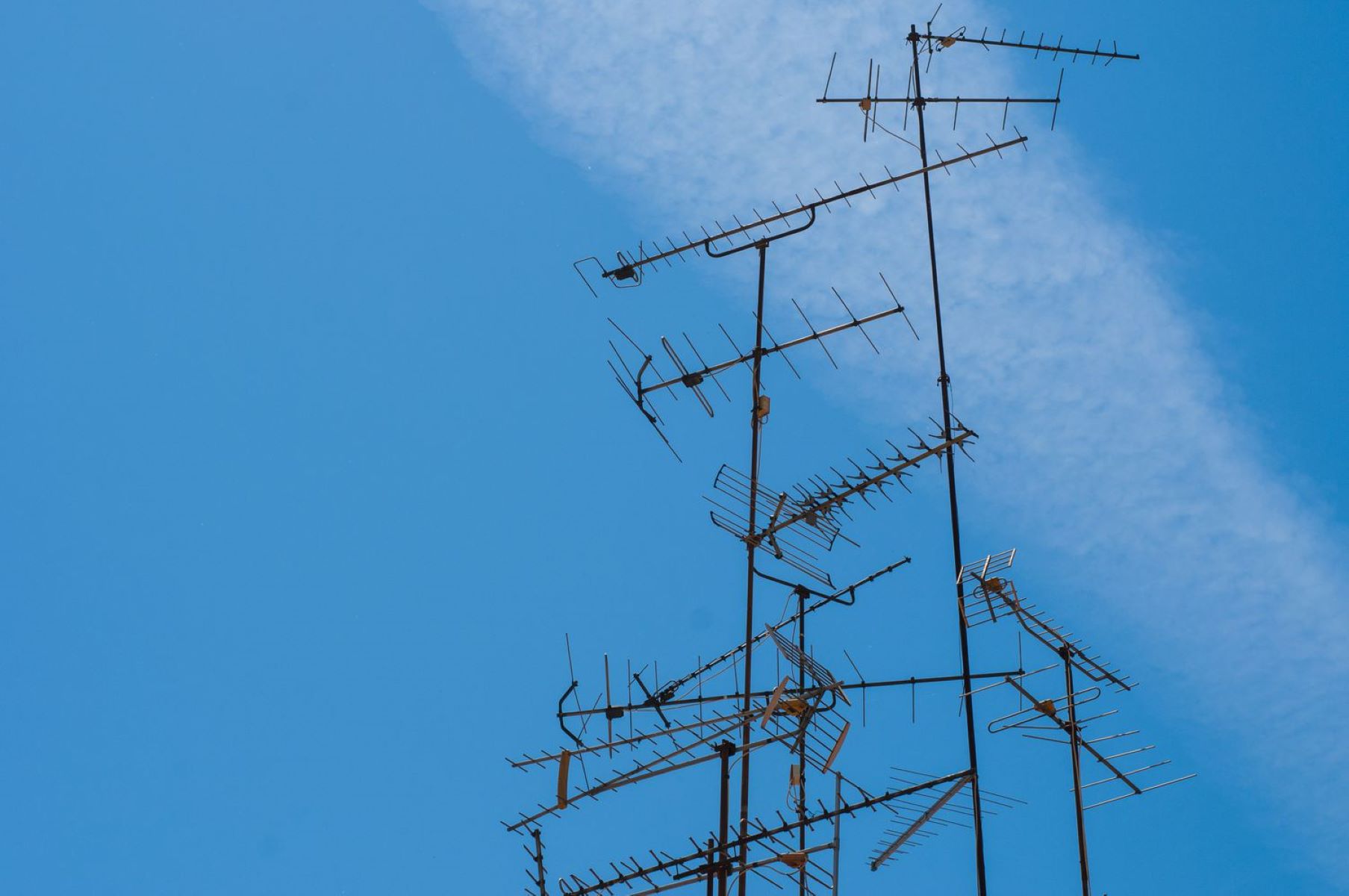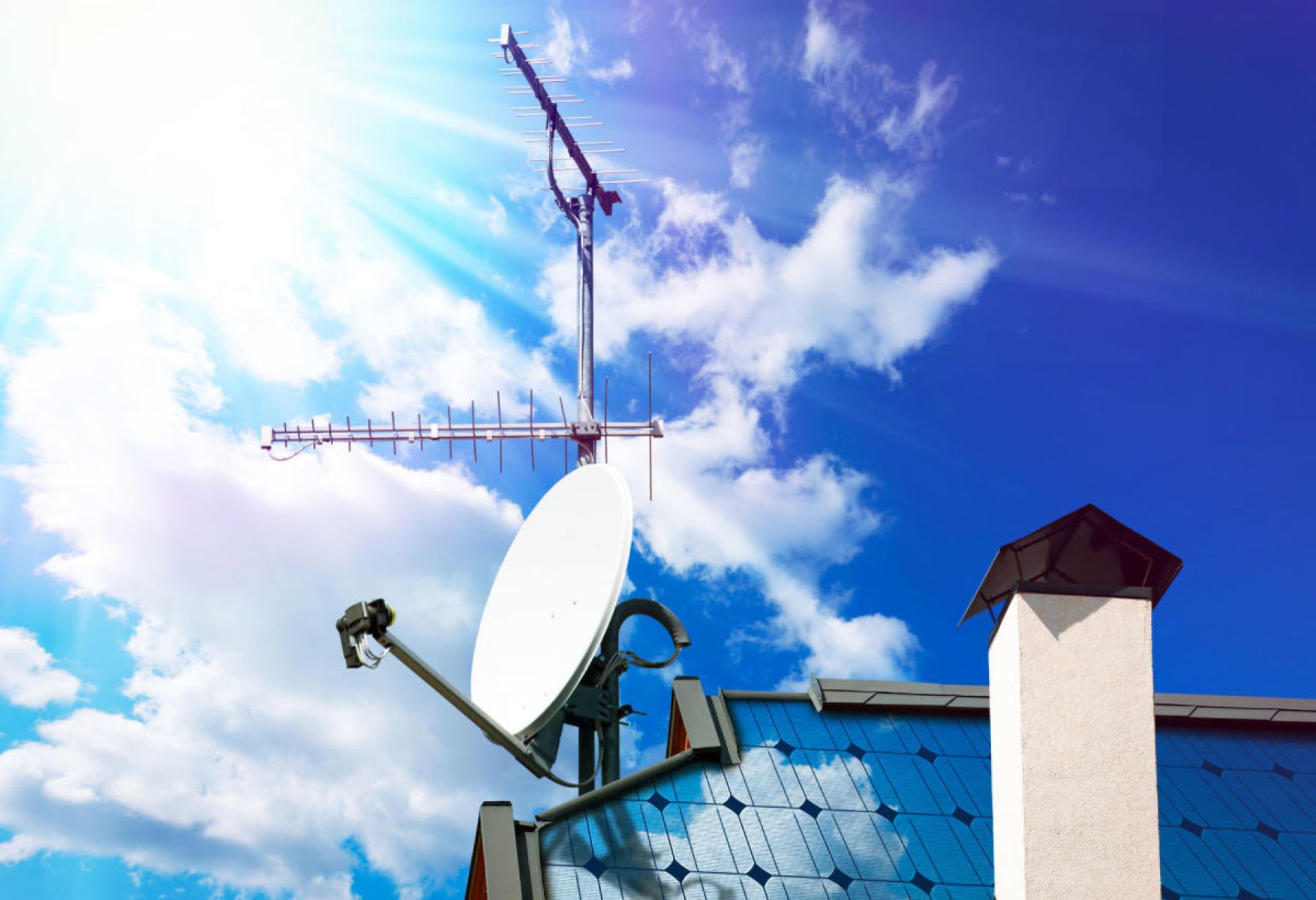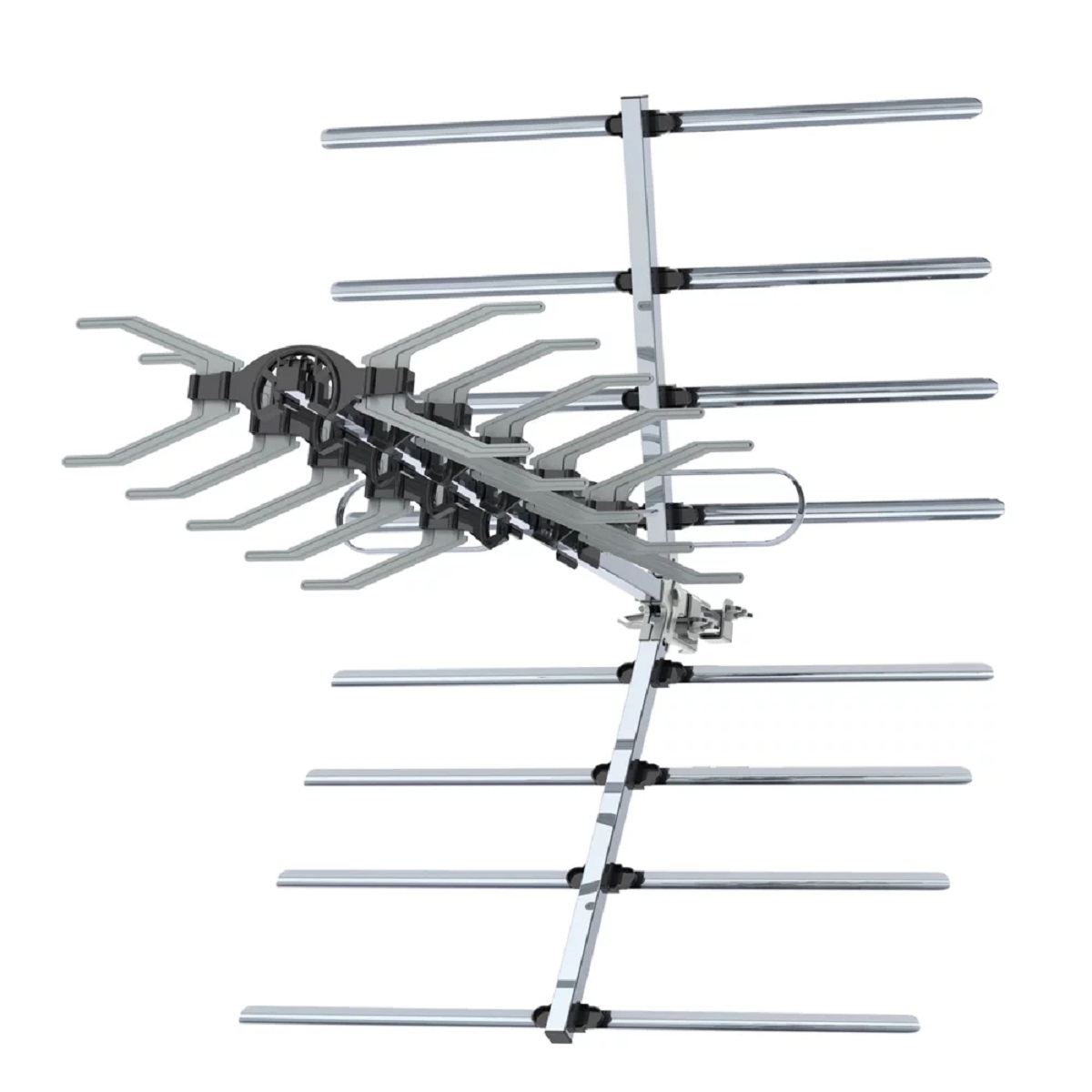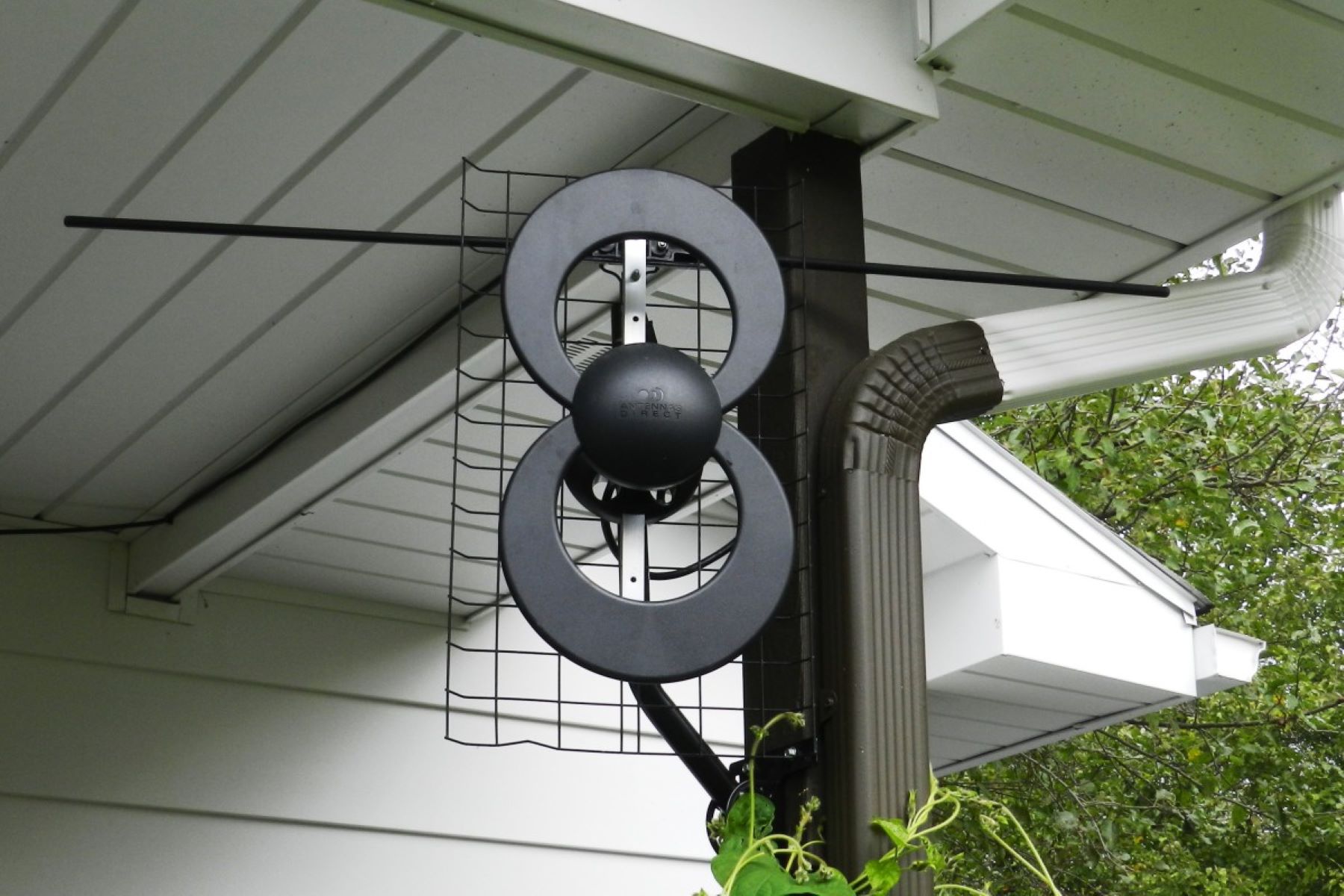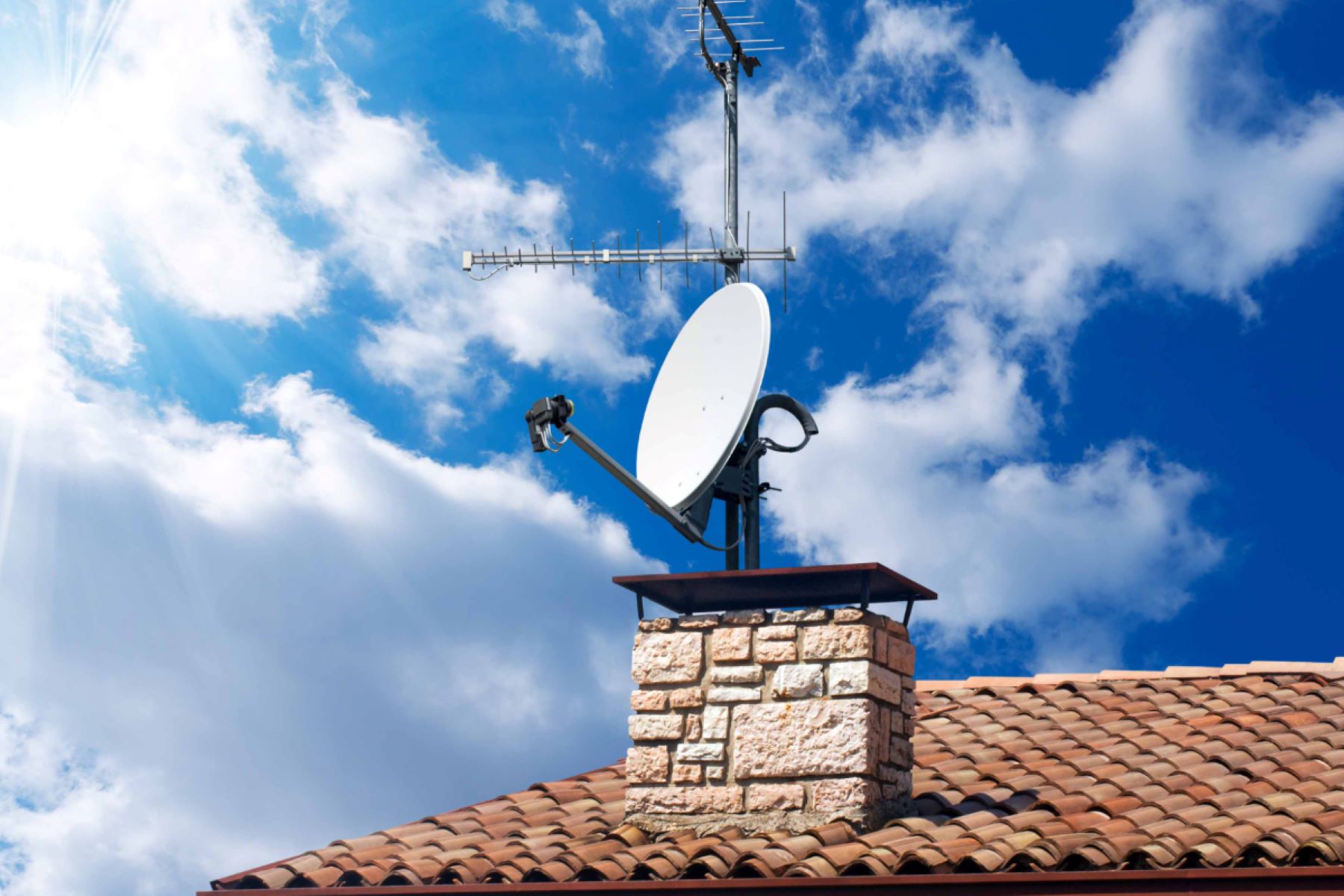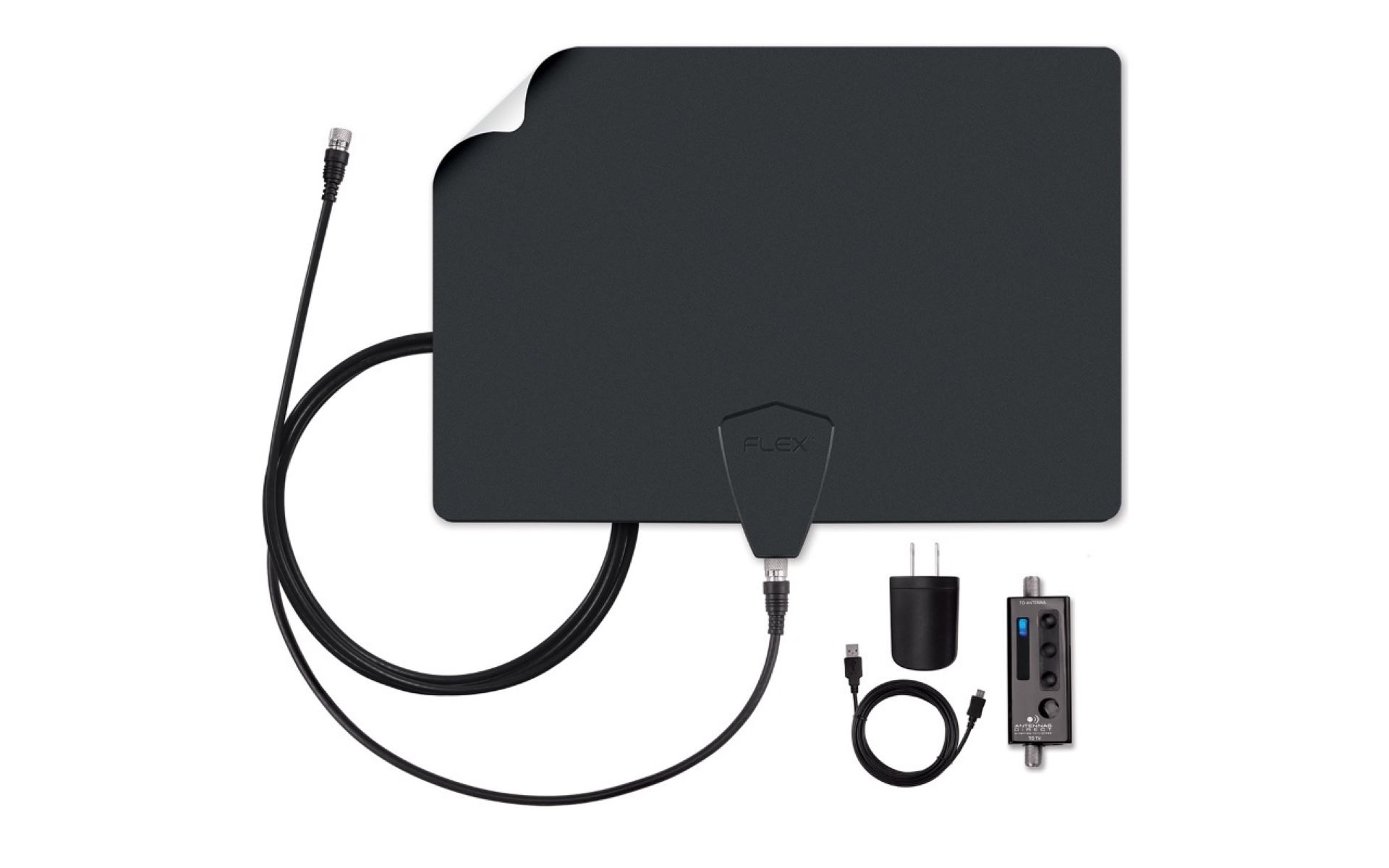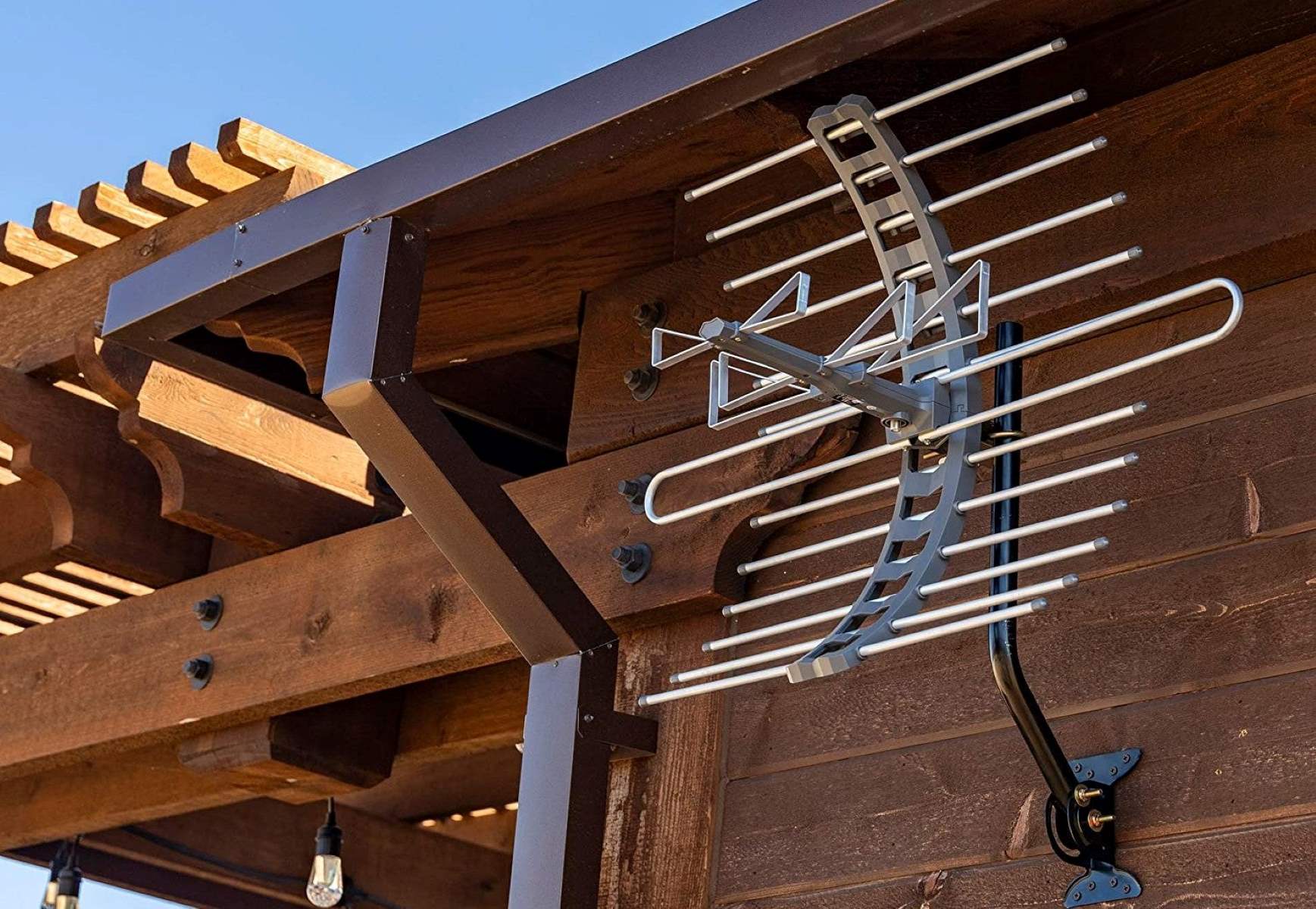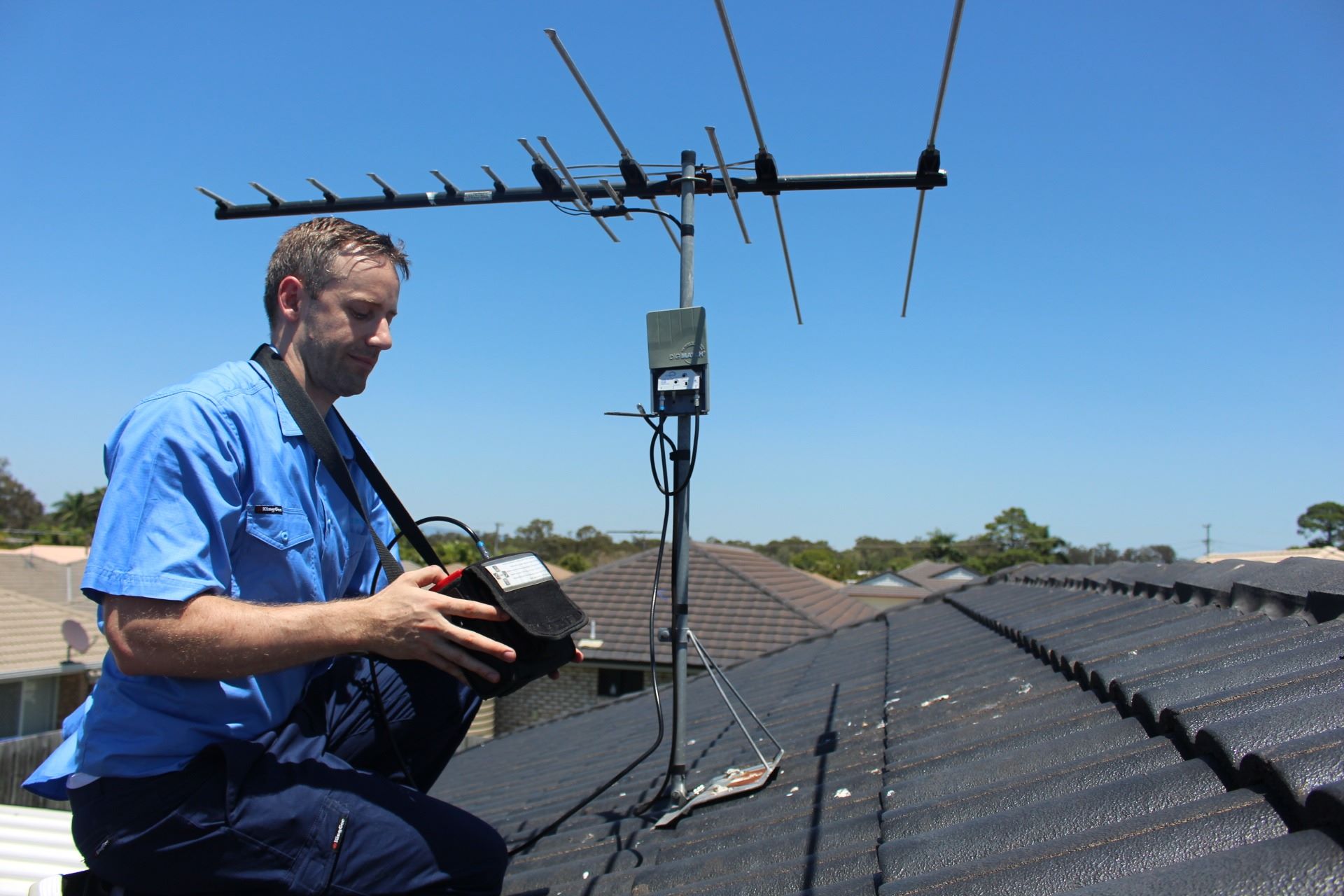Introduction
Installing a TV antenna tower is a great way to improve your television reception and access a wide range of channels. Whether you’re looking to cut the cord and rely on over-the-air broadcasts or simply want to enhance the signal quality of your existing cable or satellite service, a TV antenna tower can be a valuable addition to your home.
In this step-by-step guide, we will walk you through the process of installing a TV antenna tower. From assessing the location to testing the TV antenna signal strength, we’ll cover all the essential steps to ensure a successful installation. By following these instructions, you’ll be able to set up your TV antenna tower and enjoy crystal-clear reception of your favorite shows and channels.
Before we jump into the installation process, it’s important to note that installing a TV antenna tower may require permits or approvals from your local authorities. Make sure to check the regulations in your area to ensure compliance before proceeding with the installation. Additionally, it’s crucial to prioritize safety throughout the entire process. If you’re uncomfortable working at heights or lack experience in tower installation, it’s highly recommended to hire a professional to assist you.
Now, let’s get started with the first step of installing a TV antenna tower, which is assessing the location.
Step 1: Assessing the Location
Before you begin the installation of your TV antenna tower, it’s crucial to assess the location where you plan to install it. This step will help you determine the suitability of the area and ensure optimal signal reception.
Start by considering the height and surroundings of the location. Look for an area that is elevated and free from obstructions such as tall buildings, trees, or other structures that may block the TV antenna’s line of sight to the broadcast towers. The higher you can install the tower, the better your chances of receiving strong and clear television signals.
Next, determine the direction of the nearest broadcasting towers. This information can be found online through websites or apps that provide signal strength and tower location data. Knowing the direction of the towers will help you position your TV antenna to receive the strongest signals.
In addition to considering the height and direction of the broadcasting towers, take into account any potential sources of interference. Certain metallic objects, such as power lines or large appliances, can disrupt the signal. It’s important to position the TV antenna tower away from any potential sources of interference to ensure optimal reception quality.
Furthermore, assess the accessibility and safety of the location. Make sure that you can safely and comfortably access the tower for installation and maintenance. Consider the stability of the ground where you will be installing the tower base, ensuring it can support the weight of the tower and withstand any environmental conditions.
Lastly, check the local regulations and any homeowner association guidelines regarding the installation of TV antenna towers. Some areas have restrictions on tower height, placement, or appearance. Ensure that your planned installation complies with all the necessary regulations and obtain any required permits or approvals beforehand.
Once you have completed the assessment of the location and have determined its suitability, you’ll be ready to proceed with choosing the right TV antenna tower for your needs. In the next step, we will discuss the factors to consider when selecting a TV antenna tower.
Step 2: Choosing the Right TV Antenna Tower
Selecting the right TV antenna tower is crucial for a successful installation and optimal signal reception. There are several factors to consider when choosing a tower that suits your specific requirements and installation location.
First, consider the height of the tower. The height of the tower will depend on the distance between your location and the broadcasting towers. Ideally, you want to choose a tower that exceeds the height of nearby obstructions to maximize signal reception. However, it’s essential to ensure that the chosen tower height complies with any local regulations or restrictions.
Next, consider the material of the tower. TV antenna towers are typically made from either steel or aluminum. Steel towers offer greater strength and durability but are generally heavier and more expensive. Aluminum towers, on the other hand, are lighter and more affordable but may not be as sturdy. Choose a material that suits your budget and the weather conditions in your area.
Another factor to consider is the type of tower. There are freestanding towers, which are self-supporting structures, and guyed towers, which rely on guy wires for stability. Freestanding towers are suitable for locations with minimal wind or environmental concerns, while guyed towers offer greater stability in areas with high wind conditions. Evaluate the environmental conditions at your location and choose the tower type accordingly.
Additionally, consider the installation process of the tower. Some towers come in pre-assembled sections, which can make the installation easier and quicker. Other towers require on-site assembly, which may be more time-consuming and require additional tools or expertise. Choose a tower with an installation process that aligns with your comfort level and skillset.
Lastly, consider your budget when selecting a TV antenna tower. Determine a budget that you’re willing to allocate for the tower and explore different options within that range. Compare prices, features, and customer reviews to find the best value for your money.
By carefully considering these factors, you can choose a TV antenna tower that meets your needs, fits your budget, and ensures reliable signal reception. Once you’ve selected the right tower, it’s time to move on to the next step, which involves obtaining necessary permits and approvals for the installation.
Step 3: Obtaining Necessary Permits and Approvals
Before proceeding with the installation of your TV antenna tower, it’s crucial to ensure that you have obtained all the necessary permits and approvals required by your local authorities. This step is vital to comply with regulations and ensure a smooth and legal installation process.
Start by researching the specific permit requirements in your area. Contact your local zoning office or building department to inquire about any permits or approvals needed for TV antenna tower installation. They will be able to provide you with the necessary information and guide you through the application process.
In some cases, homeowners’ associations or neighborhood covenants may have additional regulations or restrictions regarding the installation of TV antenna towers. Check with your homeowners’ association or review your property’s deed restrictions to ensure compliance. If there are any conflicting regulations, try to obtain the necessary waivers or permissions from the relevant parties before proceeding.
When applying for permits, you may need to submit documents such as tower specifications, site plans, and engineering certifications. These documents ensure that the installation meets safety standards and adheres to local ordinances. It’s recommended to consult with a professional or an engineer with expertise in TV antenna towers to help you prepare these documents accurately.
Once you have gathered all the required documents, complete the permit application and submit it to the appropriate department. Pay any necessary fees associated with the permit application. Be prepared for potential inspections or requests for further information during the review process.
The time required to obtain permits and approvals can vary depending on your location and local regulations. It’s advisable to start this process well in advance to avoid any delays in the installation timeline.
Remember, obtaining the necessary permits and approvals is not just a legal requirement but also ensures the safety and structural integrity of your TV antenna tower. Failure to comply with local regulations may result in fines, penalties, or even the removal of the tower.
Once you have successfully obtained all the necessary permits and approvals, it’s time to gather the required tools and materials for the installation. We will discuss this in more detail in the next step.
Step 4: Gathering the Required Tools and Materials
Before you begin the installation of your TV antenna tower, it’s important to gather all the necessary tools and materials. Having everything you need on hand will streamline the installation process and ensure that you’re prepared for any challenges that may arise. Here are the essential tools and materials you will need:
1. TV Antenna Tower Kit: This will typically include the tower sections, mounting hardware, and any necessary accessories. Make sure to choose a kit that is compatible with your chosen tower type and height requirements.
2. Foundation Materials: Depending on the type of tower you’re installing, you may need concrete footings, anchors, or brackets. These will provide a stable foundation for your TV antenna tower. Check the instructions provided with your tower kit for specific foundation requirements.
3. Tools: Here are some of the tools you might need for the installation:
– Power drill with various drill bits
– Screwdrivers (both flathead and Phillips)
– Adjustable wrenches
– Pliers
– Level
– Measuring tape
– Safety equipment (gloves, safety glasses, and a hard hat)
– Ladder or scaffolding for accessing higher sections of the tower
4. Coaxial Cable and Connectors: You’ll need coaxial cable to connect the TV antenna to your television. Make sure to choose a high-quality cable that is long enough to reach your TV from the tower. Additionally, gather the necessary connectors for securing the cable to the TV antenna and television.
5. Weatherproofing Materials: To protect your TV antenna tower and connections from the elements, you’ll need weatherproofing materials such as electrical tape and silicone sealant. These will help prevent moisture from seeping into the connections and causing damage.
6. Safety Equipment: Installing a TV antenna tower can be a risky endeavor, especially if it involves working at heights. It’s essential to prioritize your safety by wearing appropriate safety equipment such as a helmet, gloves, and safety glasses. Additionally, consider using a safety harness or other fall protection equipment if needed.
Before starting the installation, carefully review the instructions provided with your TV antenna tower kit to ensure that you have all the necessary tools and materials. Double-checking this step will help prevent any delays or frustrations during the installation process.
With all the tools and materials gathered, you’re now ready to move on to the next step: clearing the area and preparing the foundation for your TV antenna tower installation.
Step 5: Clearing the Area and Preparing the Foundation
Clearing the area and preparing a solid foundation is essential for a successful TV antenna tower installation. This step ensures that the tower is secure and stable, allowing for optimal signal reception. Follow these steps to clear the area and prepare the foundation:
1. Clear the Area: Start by clearing the installation area of any debris, plants, or obstructions. Remove rocks, branches, or any other items that may interfere with the tower’s base or guy wires. Clearing the area will provide a clean and even surface for the foundation.
2. Mark the Foundation Location: Use spray paint or stakes to mark the exact location where the tower’s foundation will be placed. Consult the instructions provided with your tower kit to determine the appropriate dimensions and placement of the foundation. Double-check that the marked location adheres to any local regulations or guidelines.
3. Dig the Foundation Hole: With the marked location, use a shovel or an auger to dig a hole for the foundation. The depth and width of the hole will depend on the size and specifications of your tower. Ensure that the hole is deep enough to provide adequate support and stability for the tower.
4. Prepare the Foundation Material: If you are using concrete for the foundation, mix it according to the manufacturer’s instructions. Make sure to use the appropriate ratio of cement, sand, and water. If you are using other foundation materials such as anchors or brackets, ensure that they are prepared and ready for installation.
5. Pour and Level the Foundation: If using concrete, carefully pour the mixture into the foundation hole. Use a level to ensure that the foundation is level and aligned with the ground. Make any necessary adjustments to achieve a level foundation. If using other foundation materials, follow the manufacturer’s instructions for proper installation.
6. Allow the Foundation to Cure: After pouring the foundation, allow sufficient time for it to cure and harden. This typically takes at least 24 to 48 hours, but follow the instructions provided with your chosen foundation material for the recommended curing time.
Once the foundation has cured, the area is clear, and the foundation is prepared, you’re ready to move on to the next step: assembling the TV antenna tower. This step will guide you through the process of putting together the tower sections and preparing them for installation on the foundation.
Step 6: Assembling the TV Antenna Tower
Now that you have prepared the foundation for your TV antenna tower, it’s time to move on to the assembly process. Assembling the tower involves putting together the sections, securing them properly, and preparing them for installation on the foundation. Follow these steps to assemble your TV antenna tower:
1. Lay Out the Tower Sections: Start by laying out all the tower sections in the order indicated by the manufacturer’s instructions. Ensure that you have all the necessary sections and components needed for assembly.
2. Connect the Tower Sections: Follow the instructions provided with your tower kit to connect the sections securely. This may involve using bolts, nuts, clamps, or other connectors specified by the manufacturer. Use the designated tools, such as wrenches or screwdrivers, to tighten the connections properly.
3. Follow Safety Guidelines: As you assemble the tower sections, follow any safety guidelines provided to ensure a secure and stable structure. Pay attention to weight limits, torque specifications for bolts, and any additional precautions outlined in the instructions.
4. Use a Level: Regularly check the tower sections with a level to ensure that they are straight and aligned vertically. Adjust as necessary to maintain a level tower during assembly.
5. Check for Proper Connections: Double-check all the connections to ensure that they are tightened securely. This will ensure the stability and structural integrity of the tower.
6. Prepare the Tower for Installation: Once the tower sections are properly connected, ensure that any necessary accessories, such as guy wires or brackets, are securely attached according to the manufacturer’s instructions. Prepare the tower for installation on the foundation, following any specific instructions provided.
During the assembly process, it’s crucial to follow the manufacturer’s instructions carefully and take your time to ensure a safe and accurate assembly. If you have any concerns or questions, don’t hesitate to contact the manufacturer or consult a professional for guidance.
With the TV antenna tower assembled and ready for installation, you’re now prepared to move on to the next step: installing the tower base on the foundation.
Step 7: Installing the Tower Base
After assembling your TV antenna tower, the next step is to install the tower base on the foundation. Proper installation of the base is crucial for the stability and safety of the entire structure. Follow these steps to install the tower base:
1. Position the Tower Base: Carefully place the tower base over the foundation, ensuring that it aligns with the marked location. Take measurements and use a level to ensure that the base is positioned correctly.
2. Secure the Base to the Foundation: Using the appropriate hardware provided with your tower kit, secure the tower base to the foundation. This may involve bolts or other fasteners. Follow the manufacturer’s instructions to ensure proper positioning and secure attachment.
3. Tighten the Connections: Use the specified tools, such as wrenches or socket sets, to tighten the connections between the tower base and the foundation. Ensure that the base is fastened securely and that there is no movement or play in the attachment.
4. Check for Stability: Once the base is attached, check for stability by gently shaking the tower base. It should remain firmly in place without any wobbling or movement. If needed, adjust the connections or tighten the hardware further to ensure stability.
5. Follow Safety Guidelines: Throughout the installation process, adhere to all safety guidelines and procedures. Use appropriate safety equipment, such as gloves and safety glasses, when handling tools and materials.
6. Double-Check Compliance: Ensure that the installation of the tower base complies with any local regulations or guidelines. Confirm that the base height and dimensions adhere to any height restrictions or setback requirements that may be in place.
By installing the tower base securely, you lay the foundation for a stable and reliable TV antenna tower installation. Once the base is in place, you are ready to move on to the next step: erecting the tower.
Step 8: Erecting the Tower
With the tower base securely installed, it’s time to proceed with erecting the TV antenna tower. This step involves raising the tower sections and mounting them onto the base. Follow these steps to successfully erect the tower:
1. Enlist Help: Erecting a TV antenna tower can be a challenging task, especially if the tower is tall or heavy. It’s advisable to enlist the help of at least one or two additional individuals to assist with the process. Ensure that everyone involved is aware of the proper safety precautions.
2. Lift and Align the First Section: Begin by lifting the first tower section and aligning it with the tower base. Slowly guide the section into place, ensuring that it slots securely onto the base and meshes with the connections. Use caution and avoid any sudden movements or jerks during this step.
3. Secure the First Section: With the section properly aligned, follow the manufacturer’s instructions to secure it to the base. This may involve using bolts, clamps, or other fasteners provided with your tower kit. Tighten the connections securely but be cautious not to overtighten and damage the tower or the connections.
4. Repeat for Subsequent Sections: Once the first section is securely in place, repeat the process for the remaining tower sections. Lift each section, align it with the preceding section, and properly secure it using the provided hardware. Take care to ensure that each section is level and aligned correctly.
5. Use a Level: As you erect each section, regularly check for levelness and alignment using a level. This will help ensure that the tower remains straight and stable throughout the process.
6. Install Guy Wires or Braces: Depending on the type of tower you’re installing, you may need to install guy wires or braces for additional stability. Follow the manufacturer’s instructions on how to properly install and tension the guy wires or braces.
7. Review Safety Guidelines: Throughout the process of erecting the tower, adhere to all safety guidelines and procedures. Use appropriate safety equipment, such as gloves and safety glasses, and be mindful of any height-related risks.
By carefully and safely erecting the tower sections, you are one step closer to a successful TV antenna installation. However, before considering the installation complete, it’s important to move on to the next step: securing the tower.
Step 9: Securing the Tower
Securing the TV antenna tower is a critical step in ensuring its stability and safety. Properly securing the tower prevents it from toppling over or swaying excessively due to strong winds or other external factors. Follow these steps to securely fasten and stabilize your TV antenna tower:
1. Install Guy Wires: If your TV antenna tower requires guy wires for support, carefully attach them to the designated anchor points on the tower sections. Follow the manufacturer’s instructions for proper attachment and tensioning of the guy wires. Ensure that the tensions are balanced, and the wires are at the correct angle to provide maximum stability.
2. Use Proper Anchors: If your tower uses anchors for support, ensure that they are securely attached to the foundation or the ground as directed by the manufacturer. Follow the instructions to properly anchor the tower and tighten all connections to prevent movement.
3. Check for Plumb and Level: Verify that the tower is plumb (vertical) and level using a level during the securing process. If adjustments are needed, make them carefully to maintain the tower’s stability.
4. Consider Additional Support: Depending on the tower height and local regulations, you may need to install additional support structures or lightning protection systems. Consult your local codes and guidelines for any specific requirements.
5. Regularly Inspect and Maintain: After securing the tower, regularly inspect it for any signs of wear, damage, or loosening connections. Perform routine maintenance such as tightening bolts, greasing moving parts, and removing any debris that may accumulate around the tower base.
6. Monitor Weather Conditions: Pay attention to weather conditions, especially during storms or high winds. If severe weather is forecasted, take precautions such as removing antenna attachments or temporarily lowering the tower to prevent damage or accidents.
7. Consult a Professional if Needed: If you are unsure about any aspect of securing the tower or have concerns about its stability, it is recommended to consult a professional installer or engineer. They can provide expert guidance and assistance to ensure the tower’s security and longevity.
By taking the necessary steps to secure your TV antenna tower, you can enjoy reliable signals and peace of mind. However, there is still a vital step remaining: checking the TV antenna alignment.
Step 10: Checking the TV Antenna Alignment
After successfully securing your TV antenna tower, it’s important to check the alignment of the TV antenna to ensure optimal signal reception. Aligning the TV antenna correctly allows it to capture the strongest signals from the broadcast towers. Follow these steps to check and adjust the TV antenna alignment:
1. Turn on the TV and Set to Antenna Mode: Ensure that your television is turned on and set to the antenna mode or input. This mode allows the TV to receive signals from the TV antenna.
2. Adjust the Direction of the Antenna: With the help of a compass or by referring to the location of the nearest broadcasting towers, rotate the TV antenna carefully. Aim towards the general direction of the towers to establish a starting point.
3. Scan for Channels: Use the TV’s channel scanning or auto-tuning feature to search for available channels. This feature varies from TV to TV, so consult your television’s user manual for instructions on how to initiate the channel scan.
4. Assess Signal Strength and Quality: After the auto-tuning process completes, check the signal strength and quality of the received channels on your TV. Navigate through the received channels and check for any pixelation, freezing, or intermittent signal issues.
5. Fine-Tune the Antenna Position: If the signal strength or overall reception quality is not satisfactory, make small adjustments to the direction or angle of the TV antenna. Move the antenna slowly, allowing the TV to rescan the channels after each adjustment.
6. Re-scan for Channels: Once the antenna is adjusted, perform another channel scan to see if the signal strength and reception quality have improved. Repeat this process until you achieve the best possible signal strength and clear reception for all desired channels.
7. Consider a Signal Amplifier: In some cases, if the antenna signal is weak or there are additional signal interferences, consider installing a signal amplifier or a preamplifier. These devices can boost the incoming signal and improve reception quality, especially for channels that are located further away from the broadcasting towers.
By carefully aligning and adjusting the TV antenna, you can optimize the signal reception and ensure an enjoyable viewing experience. Once you have successfully checked the TV antenna alignment and achieved satisfactory reception, it’s time to connect the TV antenna to your television, which will be covered in the next step.
Step 11: Connecting the TV Antenna to the Television
Once you have aligned the TV antenna and achieved optimal signal reception, the next step is to connect the TV antenna to your television. This step involves establishing a proper connection between the antenna and the TV to ensure the transmission of high-quality signals. Follow these steps to connect the TV antenna to your television:
1. Locate the Antenna Input: Examine the back of your television to locate the antenna input. This port is typically labeled as “Antenna,” “RF In,” or “Ant In.” It may also be indicated by a small antenna symbol.
2. Prepare the Coaxial Cable: Take the coaxial cable, which should have been included with your TV antenna or purchased separately, and strip off a small portion of the protective outer layer, revealing the inner metal wire and insulation. Be careful not to damage the wire or insulation.
3. Connect the Coaxial Cable: Insert the exposed metal wire into the center pin of the antenna input, ensuring it is fully inserted. The insulation should surround the center pin. Once inserted, firmly tighten any screws or connectors that secure the cable in place to establish a secure connection.
4. Power On the Television: Turn on your television and navigate to the input or source selection menu. Select the input source corresponding to the antenna input, such as “Antenna” or “TV.” Refer to your TV’s user manual if you’re unsure how to access the input/source selection menu.
5. Run a Channel Scan: Once the TV is set to the antenna input, perform a channel scan or auto-tuning to search for available channels. This process may vary depending on your TV model, so refer to the user manual for specific instructions on how to initiate the channel scan.
6. Wait for the Scan to Complete: Allow the TV to complete the channel scan process, which may take a few minutes. Once the scan is finished, the TV will display the channels it has successfully detected.
7. Test Channel Reception: Browse through the channels and test the reception for each one. Look for channels that are clear and without any significant signal issues, such as pixelation or freezing. If you encounter any reception issues, try repositioning the antenna slightly or consider using a signal amplifier to improve the signal strength.
By properly connecting the TV antenna to your television, you can easily access and enjoy a wide range of channels and programs. Once you have established a successful connection, the next step is to test the TV antenna signal strength, which will be covered in the following step.
Step 12: Testing the TV Antenna Signal Strength
Testing the TV antenna signal strength is an important final step to ensure that your TV is receiving the best possible reception. By assessing the signal strength, you can make any necessary adjustments to optimize your viewing experience. Follow these steps to test the TV antenna signal strength:
1. Navigate to the Signal Strength Menu: Locate the signal strength or signal meter option on your television. This feature is usually found in the settings menu or as a dedicated button on the remote control. Consult your TV’s user manual if you’re unsure how to access this menu.
2. Tune to a Channel: Select a specific channel that you want to test for signal strength. Choose a channel that is known to have a reliable signal or a channel that you frequently watch.
3. Assess the Signal Strength Meter: Look at the signal strength meter on your television screen. This meter typically displays a range or scale, indicating the strength of the signal received by the TV antenna. A higher value on the meter signifies a stronger signal.
4. Adjust the Antenna Position: If the signal strength appears weak or fluctuating, carefully adjust the position or angle of the TV antenna. Make small, incremental movements and wait for a few moments to allow the TV to adjust to the new position. Check the signal strength meter after each adjustment.
5. Repeat the Process: Repeat steps 2 to 4 for multiple channels to get a more comprehensive understanding of the overall signal reception. Note any channels that consistently display poor signal strength and reassess the antenna’s alignment or consider using a signal amplifier if necessary.
6. Make Fine-Tuning Adjustments: If the signal strength is still unsatisfactory, you may need to fine-tune the antenna by adjusting its orientation or height. Consult the TV antenna manufacturer’s guidelines for specific instructions on maximizing signal reception.
7. Evaluate Reception Quality: While signal strength is important, also assess the reception quality of the channels you tested. Look for pixelation, freezing, or intermittent disruptions in the picture and sound. Adjust the antenna or consider a signal amplifier to improve reception quality if needed.
By thoroughly testing the TV antenna signal strength, you can ensure optimal reception and a high-quality viewing experience. Take the time to fine-tune the antenna position and consider the use of signal amplifiers or other enhancements as necessary. With a strong signal, you can fully enjoy the multitude of channels available through your TV antenna.
Conclusion
Congratulations! You have successfully completed all the necessary steps to install and set up your TV antenna tower. By following this step-by-step guide, you have learned how to assess the location, choose the right TV antenna tower, obtain necessary permits, gather the required tools and materials, clear the area, prepare the foundation, assemble the tower, install the tower base, erect the tower, secure it properly, check the antenna alignment, connect it to your television, and test the signal strength. With these steps, you have maximized your chances of achieving excellent signal reception and enjoying a wide range of channels.
Remember to regularly inspect and maintain your TV antenna and tower to ensure consistent performance. If you experience any signal issues or changes in reception quality, reassess the alignment, connections, and surrounding environment for potential interference sources.
Keep in mind that every installation may have unique considerations based on location, local regulations, and specific equipment. It’s important to refer to the manufacturer’s instructions and consult professionals if you have any doubts or concerns during the installation process.
Now, sit back, relax, and enjoy the benefits of your TV antenna tower. By accessing over-the-air broadcasts, you can enjoy high-definition, free-to-air channels with no monthly subscription fees. Say goodbye to expensive cable bills and explore the wealth of programming available through your TV antenna.
Thank you for following this guide, and we hope that your TV antenna tower installation proves to be a successful and rewarding endeavor. Happy viewing!







